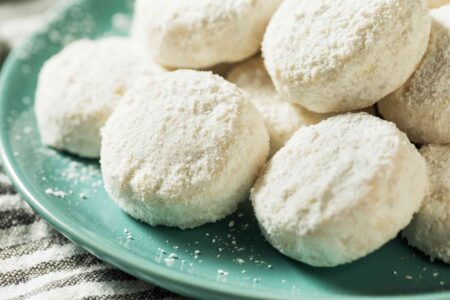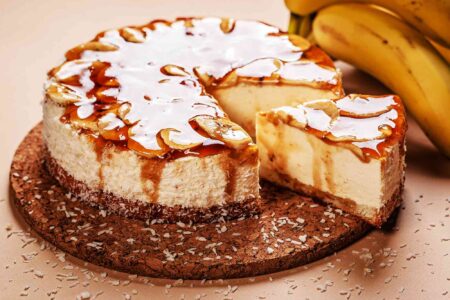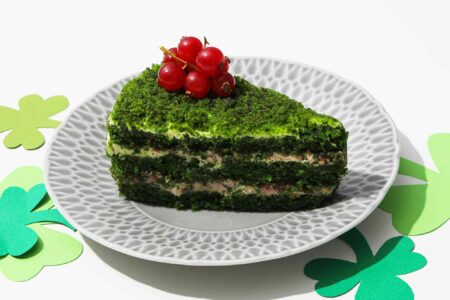Rugelach Recipe
Looking to make Rugelach at home?
You may learn how to make this filled cookies by following this recipe for homemade rugelach. You can also use your own preferred filling in the dough recipe! The options are unlimited for these uncomplicated, not excessively sweet cookies.
The Austrian kipfel (sometimes written kipferl), a customary monastery dessert made for Easter, is where it all starts in Central Europe.
The Old High German phrase for a cart’s horn-shaped stanchions is where the word “kipfel” first appeared.
There are known references to it from the 11th and 13th centuries, but no descriptions or recipes are included. Only a few decades later, kipfel is defined as a crescent-shaped yeast roll that is popular for breakfast and coffee breaks, especially in Austria.
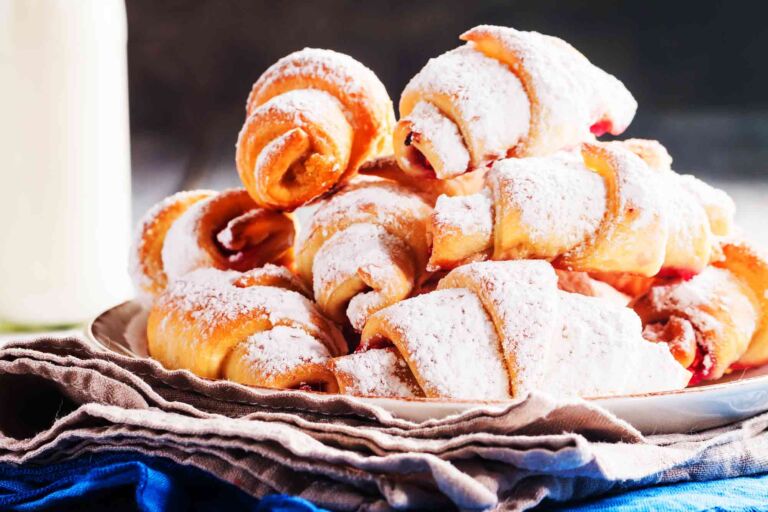
| Prep time | Cook Time | Rest Time | Total Time |
|---|---|---|---|
| 30 min | 25 min | 80 min | 135 min |
Europe and the Rugelach
Soon after, neighboring nations create their own variations and call them by the original name or the Slavic word for horn, rog.
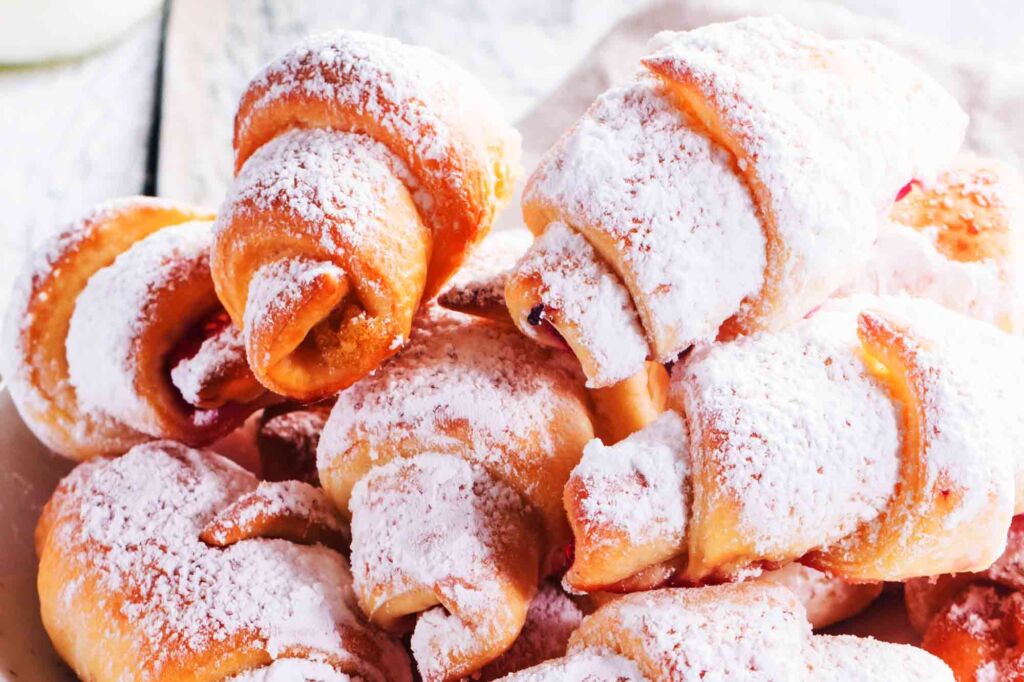
These variations go by the names kifli in Hungary, kifla in Bulgaria, also in Croatia, and Serbia, rohlk in the Czech Republic, and rogalik in Poland, Ukraine, and Russia. (And yes, they do make it to Paris in the middle of the 19th century, where they are known as croissants and later develop into a laminated dough pastry.)
Today, nearly every nation in Central or Eastern Europe has its own variation of a crescent-shaped yeast dough pastry with a sweet filling. Some varieties include fillings made of ground walnuts, poppy seeds, dried fruits, or preserves.
Ingredients
For the Dough
For the Filling
Instructions
Make the dough for Rugelach
For the dough, combine the flour, butter, cream cheese, and also the salt in the food processor’s work bowl.
After four to five pulses, switch on the processor and continue processing for about a minute, or until the dough forms a shaggy ball.
Transfer the dough to a piece of plastic wrap that has been lightly dusted with flour.
Make a disk that is 12.5 cm (5 inches) in diameter, and then wrap securely after flouring the surface.
Smooth with a rolling pin, then tap the disk’s or rectangle’s edges on the counter very lightly.
The smoother the edges, the less prone they will be to cracking later on.
The dough should be chilled for about an hour, or until an instant-read thermometer reads 4°C (40°F).
The dough can be frozen for three months, defrosting overnight in the fridge, before use.
In the meantime, set the oven rack in the center and heat the oven to 190°C (375°F). Stack 2 baking sheets with parchment paper covering the top sheet.
Make the filling for Rugelach
Combine the walnuts, 2 tablespoons sugar, honey, orange or lemon juice, 1/4 teaspoon cinnamon, and also the nutmeg in a small bowl to make the filling.
Roll out the dough into a 23 cm (9-inch) circle on a lightly dusted surface. Trim the edges using a paring knife and a dinner plate.
Using an offset spatula, spread the filling over the dough’s surface, leaving a 1.20 cm (1/2-inch) border. Sprinkle bread crumbs over the filling.
Cut disk into 16 equal wedges using a pizza cutter, pastry wheel, or sharp knife.
Roll up each lengthy triangle beginning at the wide end and seal by pressing on the sharp end. Place on baking sheet seam side down.
Continue quickly with the remaining triangles, spacing the cookies at a distance of about 5 cm (2 inches).
Before continuing, place baking sheet in freezer for at least 20 minutes.
Alternately, freeze the dough thoroughly and transfer it to freezer bags or containers for up to 6 months, then, to continue, defrost the dough in the refrigerator overnight.
To complete and bake, combine the remaining 1/2 teaspoon sugar and 1/2 teaspoon cinnamon in a small bowl.
Using a little pastry brush, apply egg wash to the surface of the cookies. Sprinkle with a mixture of sugar and cinnamon.
Bake the Rugelach
Cookies should be baked for 22 to 25 minutes, or until golden and flaky. It’s fine if some filling leaks out.
The bottoms of the rugelach should be caramelized, not blackened.
Transfer the cookies to a rack and allow them to cool completely, which should take approximately an hour.
Store up to 3 weeks in an airtight container, stack between wax paper, or freeze for up to a month.
Enjoy, Good Appetite!


